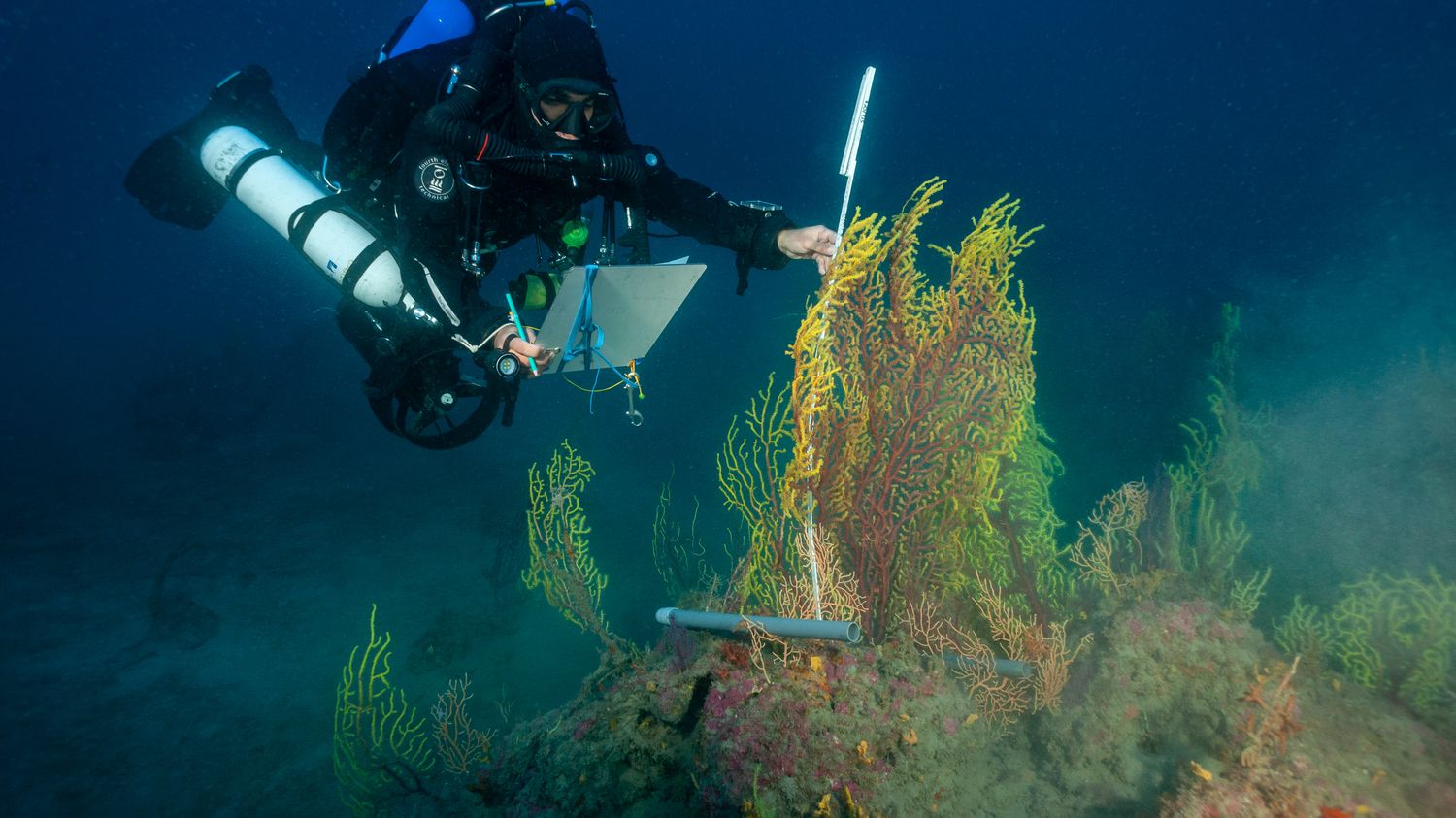In Marseille, the Septentrion association is organizing a two-week mission to dive and study gorgonians, a species of coral, in the Mediterranean Sea.

Published
Update
Reading time: 2 min

They are called “gorgonians”: these kinds of large corals make up the forests of the seabeds of the Côte d’Azur. The Septentrion association in Marseille, focused on research and training in marine biology, studies these strange marine plants. The ones closest to the surface of the sea were decimated two years ago during the underwater heatwave that hit the Mediterranean.
Since the week of July 8 and until Friday July 19, in collaboration with Ifremer but also the Côte Bleue Marine Park and the French Office for Biodiversity, the members of Septentrion have been diving to several dozen meters deep to study, photograph and list these gorgonians with the aim of protecting them. Franceinfo was on board one of the association’s boats.
From Pointe Rouge, it takes a few dozen minutes by boat to reach the Catchoffs, this area of 1 700 hectares off the coast of Marseille somewhere between Carry-le-Rouet and the Frioul Islands. That day, Olivier and Quentin, employees of Septentrion and specialists in gorgonians, were diving.
“We’re kind of in the middle of nowherethey describe. It’s quite paradoxical, because we are above flat bottoms whereas generally we will find gorgonians along drop-offs. But on these flat bottoms surrounded by sand, we have outcrops, rocks that emerge. And on these rocks, we find gorgonians of a quite incredible size. !”

Some even reach 1 metre 20, which is rare. On the scale of the Mediterranean, they can be compared to trees. At the helm, Tristan keeps an eye on the divers. The biologist even speaks of animal forests. “It provides shelter and food for many specieshe explains. We talk about an animal forest because these gorgonians really have the same ecological functions as trees in a forest. They create a microclimate by slowing down the currents a little, by creating specific currents under them and by providing shade.”
“They will also provide a place for spawning, resting or reproducing for species of fish, lobsters, certain species of shrimp, molluscs, capons, very famous for bouillabaisse in Marseille in particular, and even species of sharks.”
Tristan, biologist for the Septentrion associationfranceinfo
Gorgonians are not strictly speaking threatened but they still remain a species that needs to be protected. “We will not be able to stop climate change tomorrowTristan recognizes. On the other hand, we can stop the human pressures that we apply to these gorgonian populations. : limit fishing, limit diving which impacts the gorgonians due to fin strokes in particular, or limit anchoring. Gorgonians are a sort of umbrella species : if we protect it, we protect all the species around us.”

The Septentrion association team will continue its dives this summer and fall, before the mistral and winter make exploration conditions too difficult. The project will end definitively on December 31. But Tristan hopes that other missions will take place to continue to raise awareness and alert on the protection of gorgonians.
